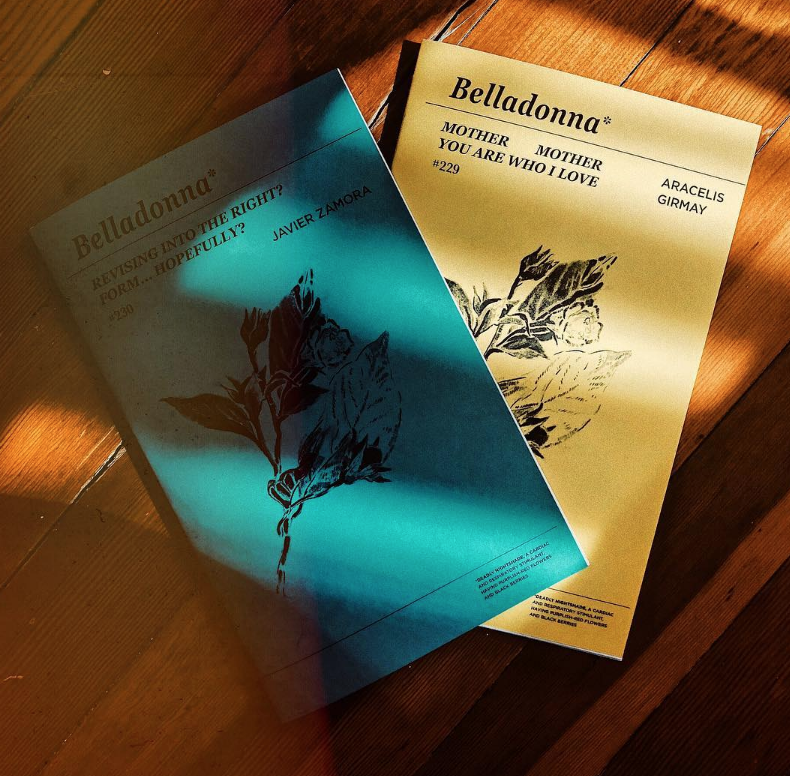
Belladonna Founder Rachel Levitsky on Poetry, Politics, and What Comes Next
EJB: And the name Belladonna?
RL: It can mean beautiful woman and dangerous, medicinal plant. The idea of kill/cure worked for me.
EJB: How did Belladonna go from readings at Bluestocking to becoming a press?
RL: I met David Kirschenbaum when I was in school at Naropa. By the time the reading series started, David was living in New York and coming to our readings. One day he told me he could make chaplets for events. I thought it sounded like too much work. I had a fulltime job, was trying to write, and was organizing the series, so I didn’t want to do it. But David said he’d make the PDFs and would copy everything at Wholesale Copies. They charged us two-cents a page, and with just a staple to hold everything together, we could print 50 copies for $25. We still do this, but the print run is now 125 for our chaplets. I’m grateful to David and Bill Mazza, who’ve given us their labor for years.
Still, even with the growing number of chaplets we were producing, for a long time, Belladonna was just me pulling readings together. It was not an organization. Actually, for 20 years, Belladonna was basically held together by an idea.
This morphedin 2001 when Erica Kaufman contacted me and asked to be an intern. Between 2001 and 2009, she got us into the Council on Literary Magazines and Presses and helped us get our first grants. We used this money to publish Argentinian poet Lila Zemborain’s Mauve Sea–Orchid and Marcella Durand’s AREA.
Erica left Belladonna in 2009 to pursue a PhD. What was now a large project was too much for me alone as a volunteer; I didn’t want to manage people. I wanted to be a writer.
Still, it was our 10-year anniversary and I wanted to publicly mark all the thinking and making that we’d done. Erica Kaufman was in school at the CUNY Graduate Center and a group of us organized a conference, held there, called Advancing Feminist Poetics and Activism. It was meant to be a swan-song. When it was all over, I really needed a break. I thought it was time to shut down but people kept approaching me with project ideas so I gathered folks in my house to talk about Belladonna’s future. This is when we became the still-all-volunteer Belladonna Collaborative.



